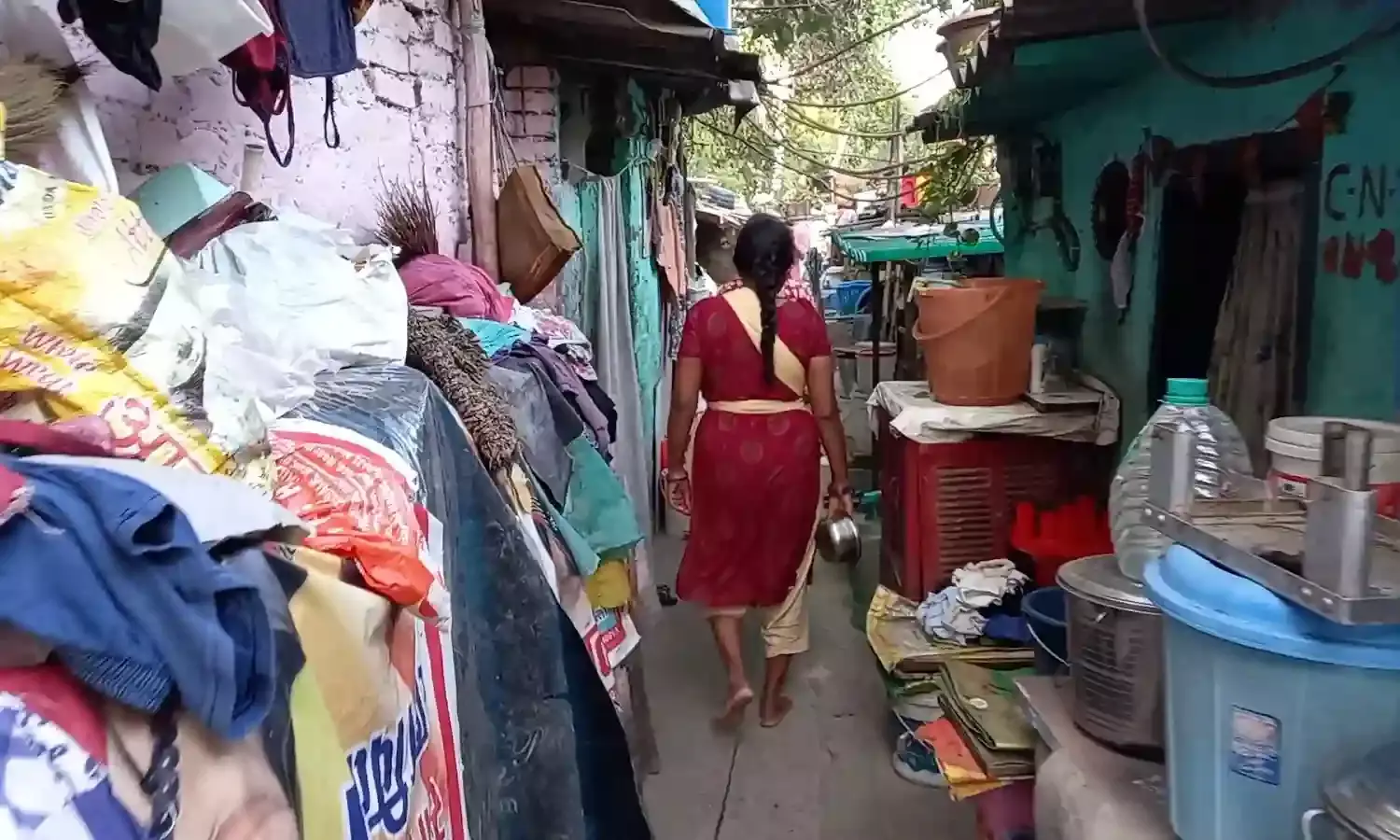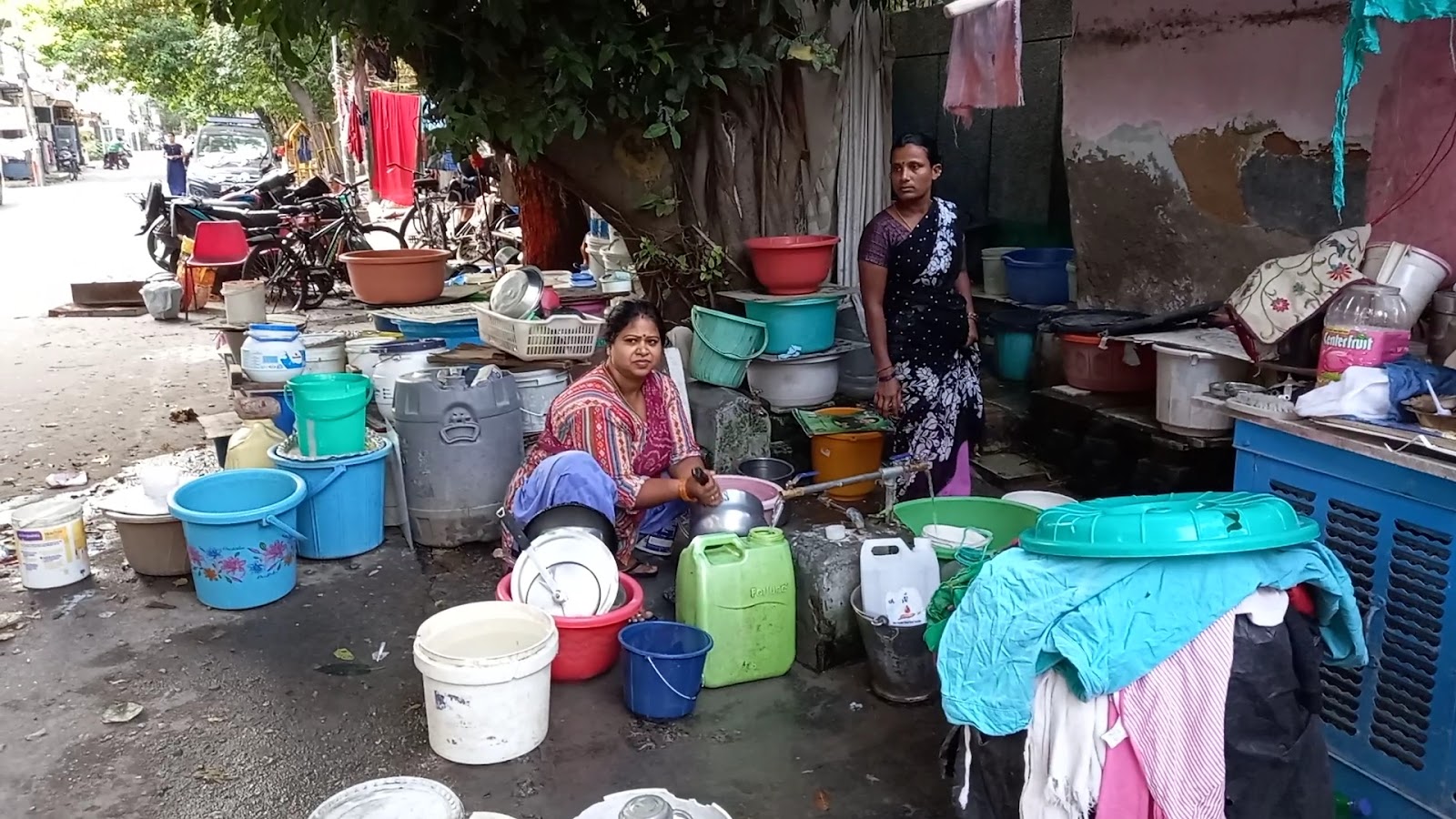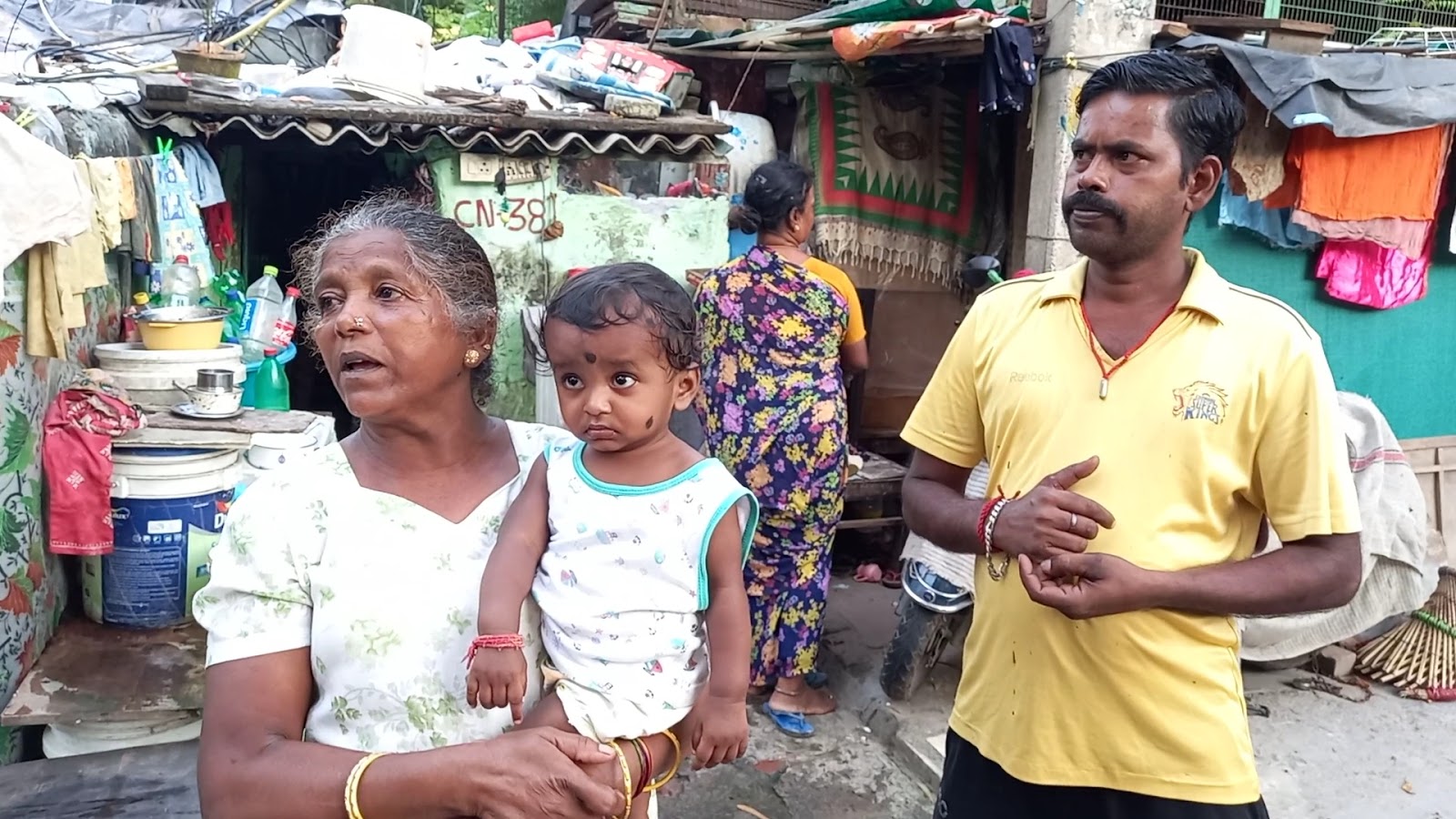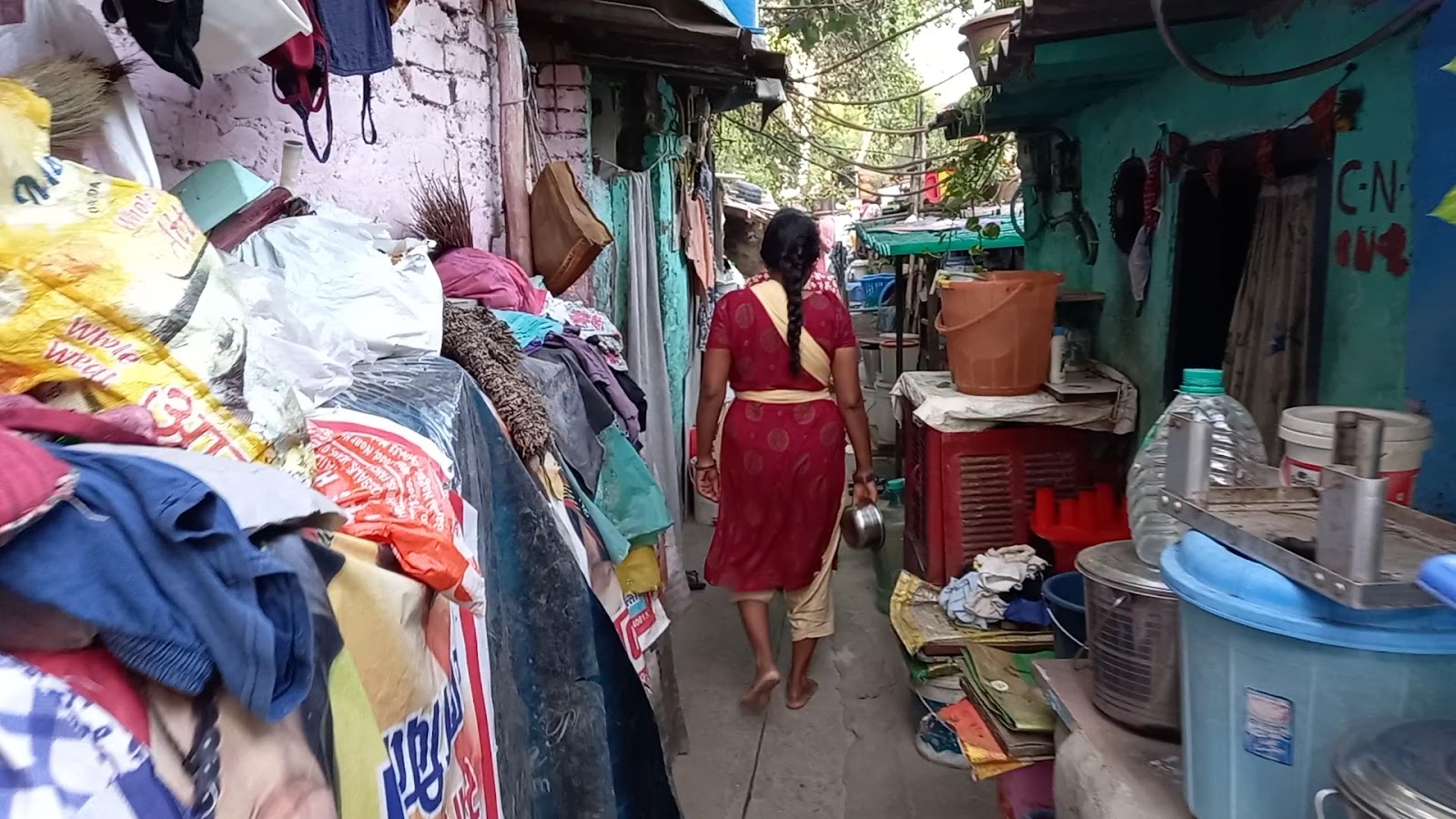Of Eviction and Inadequacy: Delhi's Pant Nagar
Of Eviction and Inadequacy: Delhi's Pant Nagar

The residents of the South Indian migrant camp in Pant Nagar stand in long queues to fill their containers of water twice a day from just two water taps that cater to the entire population. With poor living conditions, congested lanes, and electrical wire canopies, their lives stand in contrast to the well-built DDA flats of Jangpura and the paved roads that lead to the camp.
Pushpa Gaud has lived in the camp for almost 40 years and is the third generation of her family to live in the jhuggi. Their documents like the ration card and Below Poverty Line card list Pant Nagar camp as their official address. With rampant eviction drives happening across the city, this camp might be next on the list of the South Delhi Municipal Corporation (SDMC).
The inhabitants of the camp claim that in September 2020, the SDMC came to demolish their jhuggis without any notice.
Being aware of how the eviction process works, Gaud was surprised by the sudden and apathetic manner in which they were asked to leave their residence without any prior notice. “Where will I go in this old age?” she asks, as she balances her grandchild on her hip. With the help of the NGO Human Rights Law Network, the camp dwellers filed a court case regarding the same, which is still ongoing.

Water taps at the camp
Several numbers painted in red are written over the 58 shanties are part of the survey conducted to determine the finances required to rehabilitate the residents. Despite this, the SDMC attempted to remove the jhuggis without compensation or alternate accommodation as directed by the Delhi Slum & JJ Rehabilitation and Relocation Policy, 2015, citing financial crunch. Even with this financial handicap, the SDMC attempted to raze the colony.
The primary demand of the people of this area is not financial compensation, but rehabilitation. Gaud asserts, “You take our space, you give us another; we will not go otherwise. We don’t want money; we want alternative land…we were born here only, so what will we achieve by returning to our (ancestral) villages.”
Suresh, a driver unemployed due to the pandemic, is also very open to the idea of rehabilitation. He adds, “We don’t want to fight with the government or fight the case. Just give us land; we don’t like living in the jhuggis.” Red-tapism and corruption in the distribution of compensation money are additional reasons why the residents prefer alternative accommodation as the solution.

Pushpa and Suresh
Fifty years since the first set of migrants arrived here and built their shanties, minimal facilities have been available. These include five washrooms for the entire camp, a couple of water taps, and a mohalla clinic that stands beside a defunct DUSIB office. This eviction means a loss of not just their homes but also of the facilities that took years to arrive in the area.
Any attempt of re-construction by the people of this camp is also made difficult by the authorities. Suresh claims, "We have to pay as much as Rs 5,000 to the Municipal Corporation of Delhi (MCD) and the police officials in order to repair our thatched roofs."
Other residents allege that the ‘pucca’ colony residents complain if the jhuggi-dwellers wish to expand their living space. Ironically, these are the same residents in whose houses most of the camp’s women work as domestic workers.
Resettled colonies all over Delhi show a similar pattern: people are left on their own after the allotment of land. To date, most of these areas don’t have proper drinking water or waste management system, and are forced to pay local authorities even if they have to make minor changes in the space they live in. Starting over after eviction will force these camp residents to rebuild from scratch and beg for these meagre amenities again.
For more than a year, they have been making rounds of the courts to get what they are promised by law: dignity, proper rehabilitation, and their due as citizens of the welfare state of India. They are fighting to protect whatever they have.
The origin of the residents of this camp is also used as a reason to evict them as they are migrants from South India. On this, Gauda expresses, “We have lived here (the camp) for almost 50 years. This is our country too. We are not from outside; we are from India only!”

Camp view
Photos: Sukeerat Kaur


